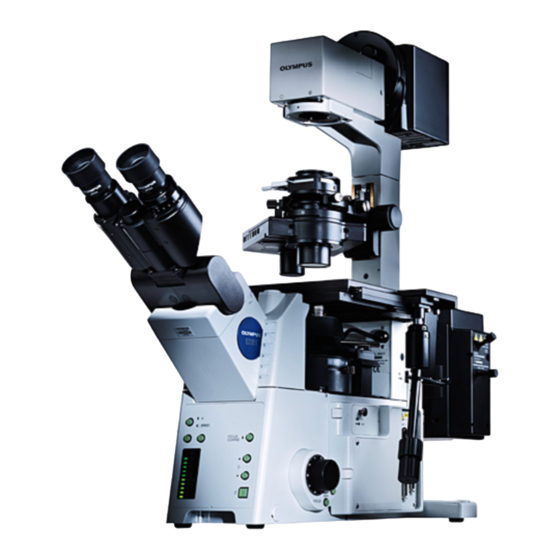Olympus IX81-ZDC2 Petunjuk Manual - Halaman 6
Jelajahi secara online atau unduh pdf Petunjuk Manual untuk Mikroskop Olympus IX81-ZDC2. Olympus IX81-ZDC2 16 halaman. Focus drift compensating microscope

Notes on ZDC (Focus Drift Compensation)
When using an objective with correction collar, always adjust the collection collar before using the focus
CAUTION
drift compensation function. Otherwise, the focus drift compensation will not be available.
Be sure to use an anti-vibration bench to enable the focus drift compensation to function properly.
1. One-shot focus mode
In this mode, the 785 nm laser beam is first focused on the glass bottom dish's cover glass bottom surface (or on the
cover glass top surface in the case of an oil- or water-immersion objective) and then moved mechanically from there to
the target cell using software to reproduce the desired focus position.
Although this mode requires a certain period for moving the focal point, the capability of arbitrary setting of the focus
movement range makes it suitable for multi-point time-lapse observation.
2. Continuous focus mode
In this mode, the laser beam is focused continuously on the top surface of the cover glass of the glass bottom dish at
the same time as the target cell. During this, the focus is corrected automatically even when the change in environmental
temperature due to heat cause defocusing.
The range in which continuous focusing is possible is determined by the objective power, namely 20 µm with the 40X
objective and 10 µm with the 60X objective. With the 100X objective, the range varies depending on the model of the
objective.
Although this mode enables continuous observation (at the video rate), the fixed focusing range makes it suitable for
observation in which the cell position does not vary greatly, such as the TIRF (Total Internal Reflection Fluorescence)
observation.
} Range in which continuous focusing is possible: (Only when using a glass bottom dish)
UAPON 100XO
UPSAPO 100XO
UPLFLN 100XO2
UPLFLN 100XOI2
3
4µm or less
TIRF
3.5µm or less
3µm or less
3µm or less
